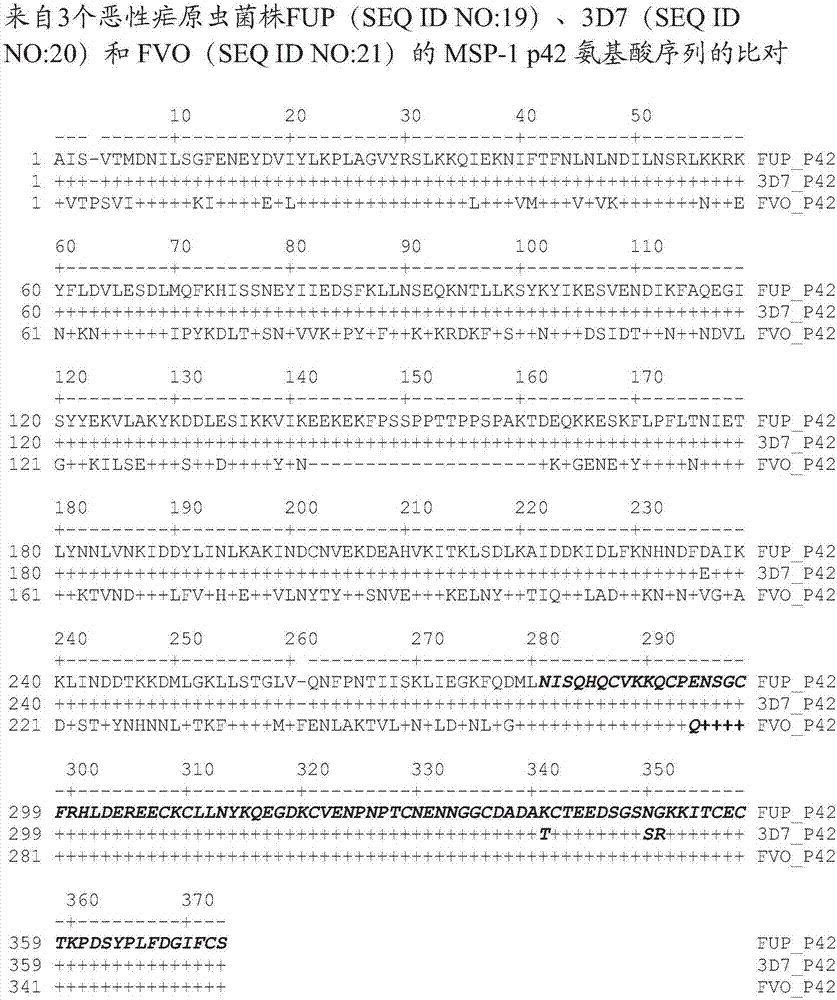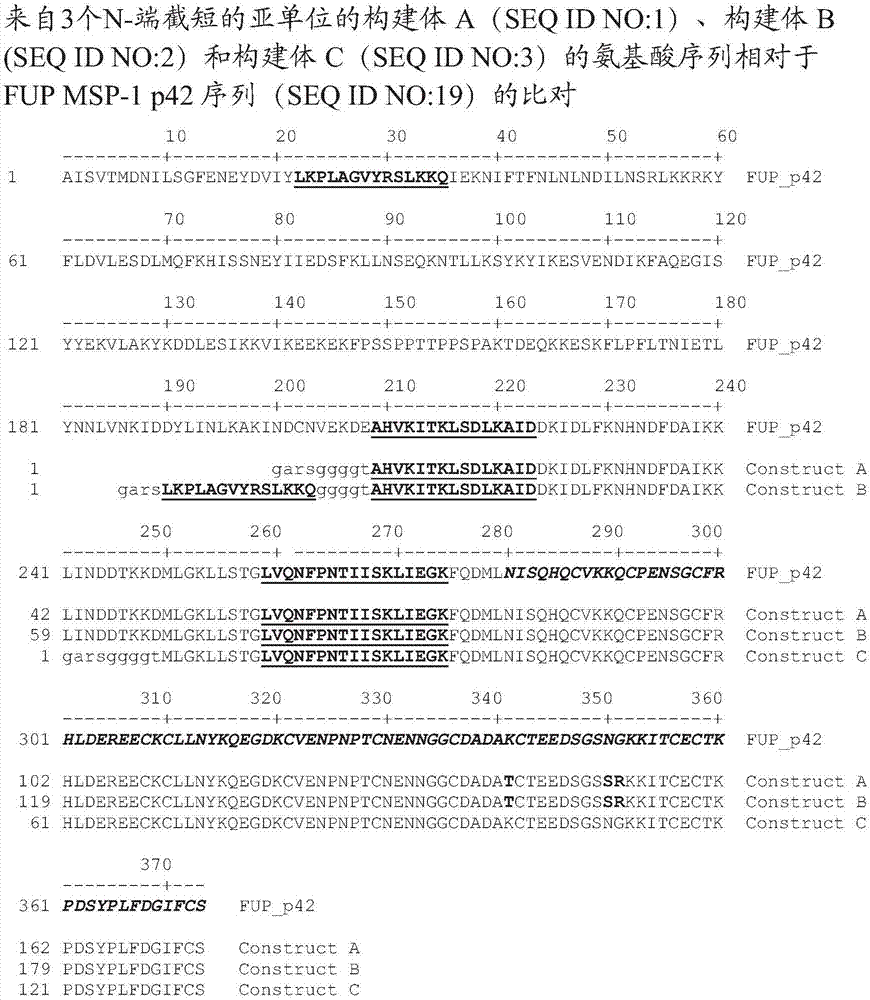Enhanced malaria msp-1 subunit vaccine
一种MSP-1C-、亚单位的技术,应用在抵抗媒介传播的疾病、过敏性疾病、含有效成分的医用配制品等方向,能够解决未报道“增强性”和“抑制性”序列鉴别等问题
- Summary
- Abstract
- Description
- Claims
- Application Information
AI Technical Summary
Problems solved by technology
Method used
Image
Examples
Embodiment 1
[0050] Evaluation of T cell epitopes in the p33 region of MSP-1p42
[0051] For the development of malaria vaccines, the p19 or p42 subunits of MSP-1 have been used in many studies. There have been reports documenting the successes and failures of each of these MSP-1 subunits, as described above and discussed further below. Because of conflicting results, it is unclear which regions of these subunits are most relevant in their ability as antigens to elicit antibody responses capable of inhibiting parasite growth in vitro or to protect animals from challenge. It has been theorized that the induction of growth inhibitory antibodies against the p19 core region is determined by the specificity of T helper epitopes in the p33 region. One study in support of this theory directly compared the ability of recombinant p19 and p42 subunits to induce parasite growth inhibitory antibodies (Hui et al., 1994). Using the same adjuvant (FCA), both p19 and p42 recombinants elicited high titer...
Embodiment 2
[0058] Expression and secretion of MSP-1 C-terminal subunit protein-p33 N-terminal truncation
[0059]The first group of MSP-1 C-terminal subunit proteins was based on the N-terminal truncation of the p33 domain of the MSP-1 p42 protein, with the aim of identifying p33 domains that could enhance parasitic growth inhibition in animal models Antibody capacity. Truncation points were guided by the positions of the different potential T cell epitopes present in Table 1. Since these constructs are based on N-terminal deletions, the retained portion of p33 is kept contiguously with the p19 region, as in image 3 Exemplified native p42. Based on N-terminal truncations, a total of 8 constructs were prepared: Constructs A, B, C, D, E, F, G and Q.
[0060] The design of expression plasmids for the expression and selection of heterologous recombinant proteins in cultured Drosophila S2 cells is described. Expression of MSP-1 p42 and constructs A, B and C was achieved using pMttbns-bas...
Embodiment 3
[0069] Evaluation of the immunogenicity of MSP-1 C-terminal subunit protein constructs A, B and C
[0070] In mice and rabbits, the immunogenicity of Drosophila-expressed MSP-1 C-terminal subunit proteins (which are based on p33 N-terminal truncation, group 1) was evaluated to determine whether they had enhanced immunogenic potential . For all preliminary experiments, subunit proteins were delivered using Freund's complete Adjuvant (FCA) or ISA51.
[0071] Mice were immunized intraperitoneally three times at 4-week intervals with the purified subunit protein at a dose of 10 μg. Three weeks after each dose, mice were bled. Sera were then assessed for anti-p19 and anti-p42 titers by ELISA. New Zealand White rabbits were immunized four times at 4-week intervals with a dose of 50 μg by intramuscular route. Rabbits were bled 2 weeks after the first 3 doses, 3 weeks and 4 weeks after the 4th dose. Sera were then assessed for anti-p42 titers by ELISA. Serum from rabbits was als...
PUM
 Login to View More
Login to View More Abstract
Description
Claims
Application Information
 Login to View More
Login to View More - R&D
- Intellectual Property
- Life Sciences
- Materials
- Tech Scout
- Unparalleled Data Quality
- Higher Quality Content
- 60% Fewer Hallucinations
Browse by: Latest US Patents, China's latest patents, Technical Efficacy Thesaurus, Application Domain, Technology Topic, Popular Technical Reports.
© 2025 PatSnap. All rights reserved.Legal|Privacy policy|Modern Slavery Act Transparency Statement|Sitemap|About US| Contact US: help@patsnap.com



